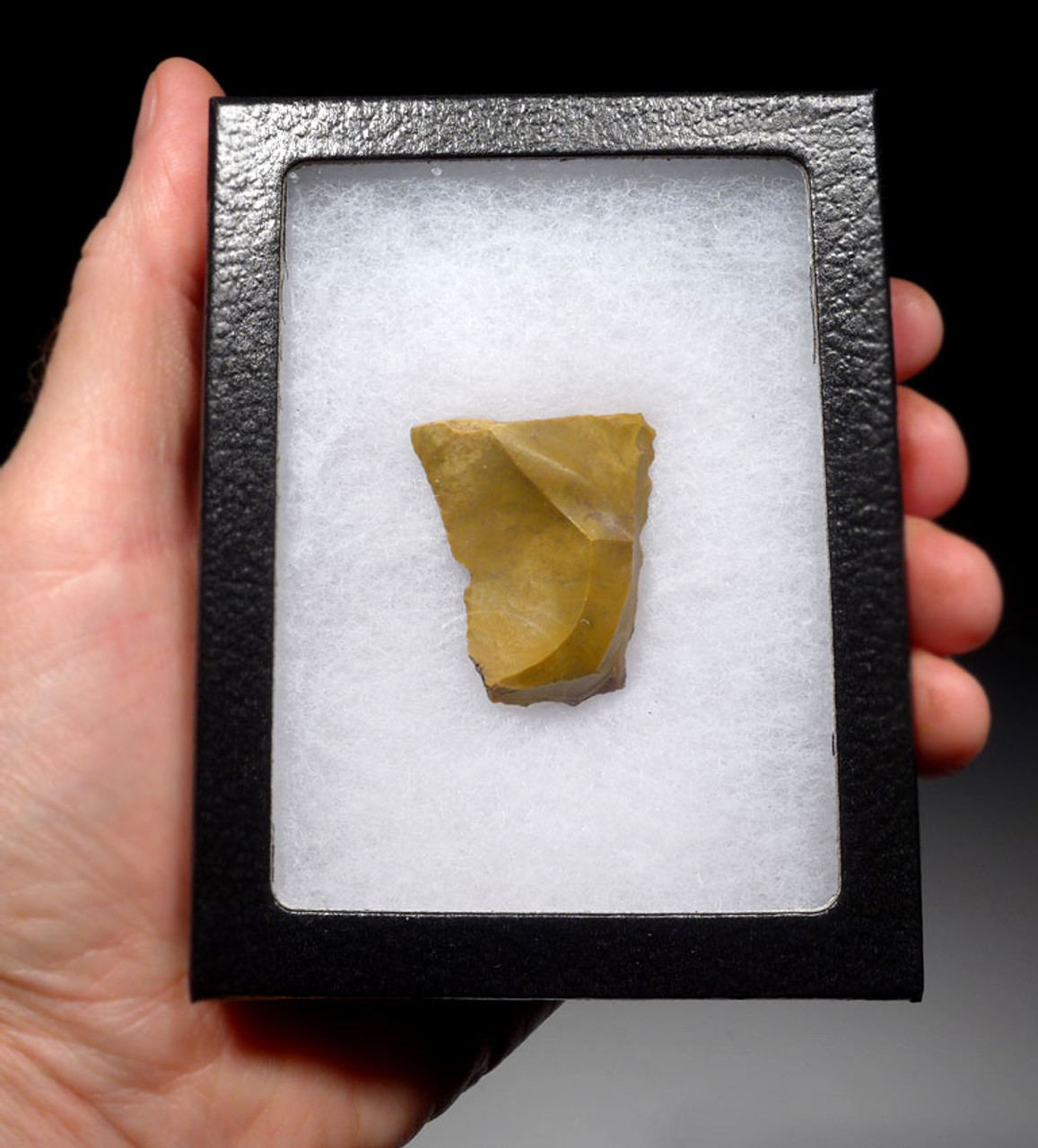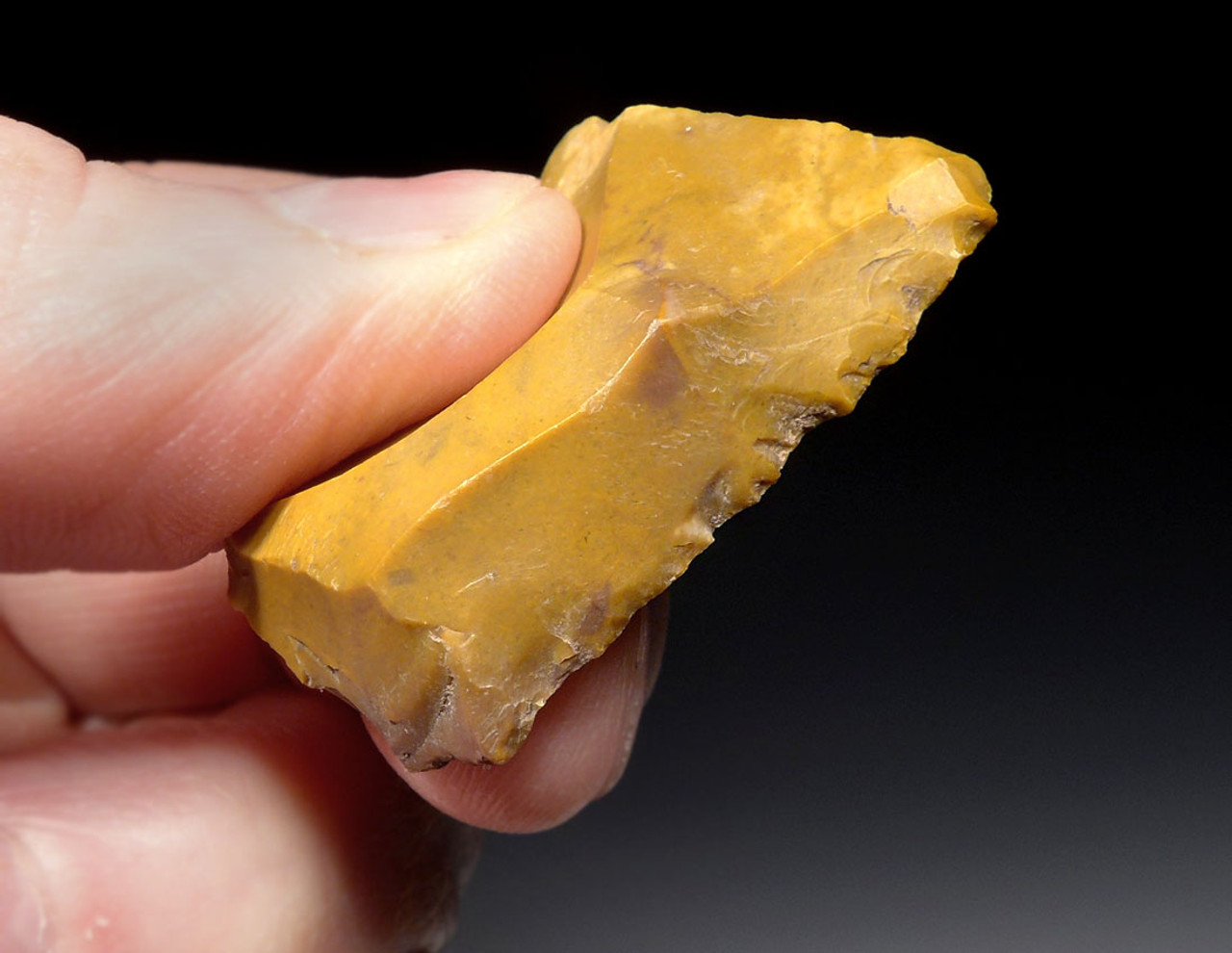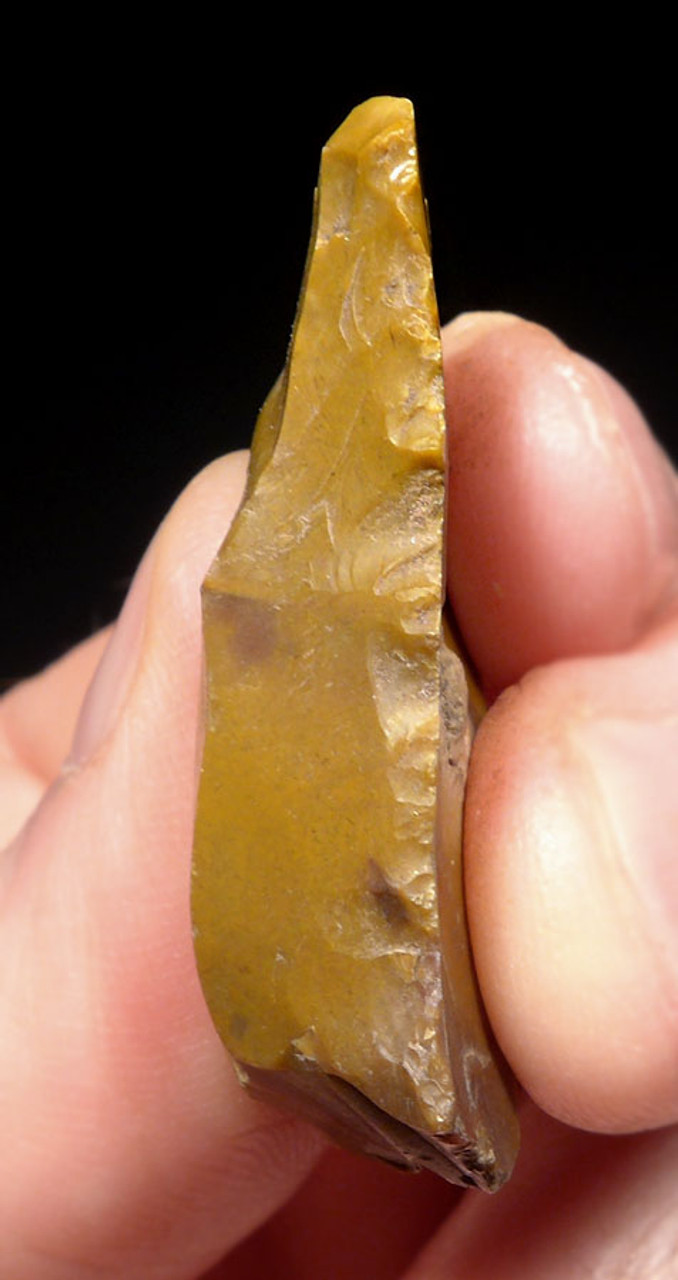Product Description
ID
|
Mousterian Tool
|
||
FOUND
|
Open Site - Fontmaure (Vellèches),
|
||
AGE
|
MOUSTERIAN: 80,000 - 40,000 years
|
||
SIZE
|
1.45" long
|
||
CONDITION
|
INTACT AND COMPLETE. NO REPAIR,
|
||
NOTE
|
STUNNING EXAMPLE WITH AMAZING
|
||
INCLUDES DISPLAY BOX
|
|||
CLICK HERE TO LEARN MORE ABOUT MOUSTERIAN TOOLS
This rare and BEAUTIFUL Middle Paleolithic flake tool was fashioned by Neanderthals over 40,000 years ago out of gem-grade colorful jasper known to occur ONLY from Fontmaure, located in West Central France. The site this specimen was excavated from is only approximately 1 acre in size and is now closed and protected by the government. This rare artifact was legally collected with the landowner's permission decades ago before the area was sealed. Fontmaure is one of Europe's most famous Neanderthal sites and the fact that this small unique prehistoric site is off-limits to any collecting, makes this wonderful stone tool artifact exceedingly rare and desirable!
Fashioned in YELLOW jasper that Fontmaure tools are famous for, this is a beautiful Mousterian flake SIDE SCRAPER. It was made on a flake with a small portion flaked off one side to create a expertly made finger grip. This flake tool is complete and in its original form as it was made by Neanderthals at least 40,000 years ago. All cutting edges are still intact as made. Intact original sediments from the layer in which it was dug are still attached on some surfaces and the microscopic crevices - evidence of authenticity not found in fakes or altered artifacts. Being made out of a colorful piece of jasper, the aesthetics on this piece are unlike what would have been usually encountered in a prehistoric life, which would have really made this tool stand out in the days of Neanderthals. This tool would have been used to scrape sinew, leather, bone, wood or ivory, as well as meat while eating.
Unlike inferior surface-collected specimens that occasionally are offered on the market, this tool was dug from the actual subterranean level that was once a Neanderthal occupation layer. What this means is that it was not weathered and damaged by exposure to the elements or plow. This entire specimen is in perfect, AS MADE condition with a rich natural soil sheen from long-term sediment burial. Original minerals and patina deep in microscopic crevices and hinge fractures provide evidence of its prehistoric authenticity, traits not found in modern or altered copies. Possibly a prestige tool, this is a beautiful, as well as rare Neanderthal artifact. NO RESTORATION, REPAIR OR MODERN DAMAGE. Our fortunate purchase of a very old private Dutch collection allows us to offer this SCARCE Neanderthal artifact.
Out of the many archaeological sites in France containing Paleolithic objects, Fontmaure is one of the "Crown Jewels" of the period of the Neanderthals. This site is very small, spanning only approximately one acre. It gets its name from the neighboring farm where it is located. Artifacts from Fontmaure have been dated to at least 40,000 years old and are classified as from the Chatelperronian and Mousterian era, having been fashioned by the Neanderthal people. One of the unique published finds of Fontmaure is the very beautiful and unique jasper which is only found here and is primarily red and yellow. Many of the objects found in Fontmaure are made of this stone with other objects made of sandstone, flint and light gray quartz. This light gray quartz originates from a place that is situated about hundred kilometers from Fontmaure. Another unusual feature is that, to date, it is one of a few known open-air settlements. Even more interesting is the fact that along with the stone tools found, human and animal figures have also been excavated. There are also stones used in some type of ritual, such as triangular stones, round discs and stone balls (bolas) that have been discovered in Fontmaure. These art objects of the Neanderthals make up some of the oldest art known from Europe! Today, we find the unusual, bright colors of the Fontmaure Neanderthal tools to be intriguingly beautiful and no doubt, the Neanderthals of prehistory coveted and prized these pieces, as well!
 US DOLLAR
US DOLLAR
 EURO
EURO
 AUSTRALIAN DOLLAR
AUSTRALIAN DOLLAR
 CANADIAN DOLLAR
CANADIAN DOLLAR
 POUND STERLING
POUND STERLING


















